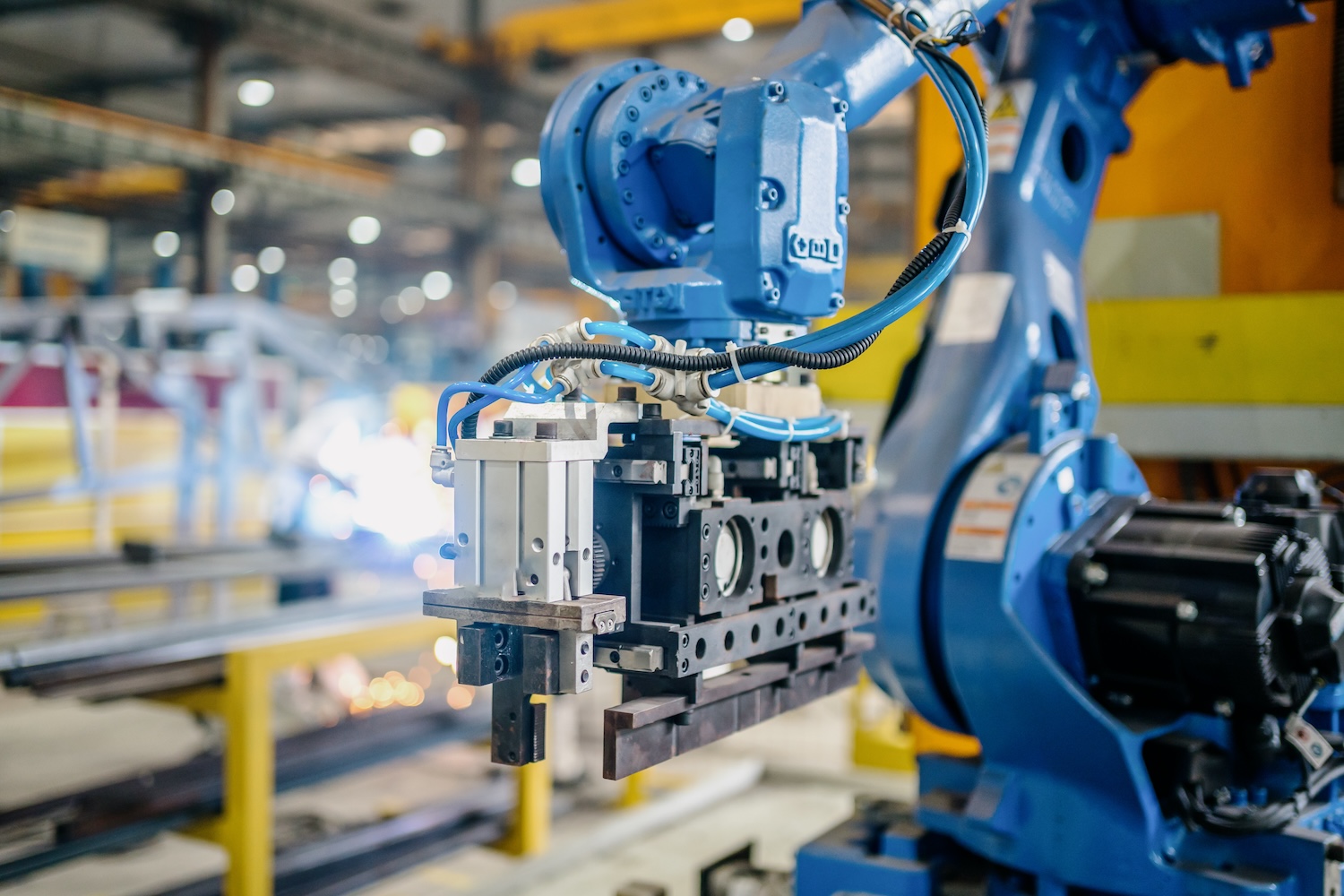Investors and business leaders have coped with a lot over the past ten years or so. Clearly, these are interesting times, and we would not dare to guess that the industrial sector will have an easy (or dull) time in the next ten years. Fortunately, across the micro-verticals of the industrial sector, we can find companies that are thriving. Digging into the practices of these companies, we continue to find encouragement that attractive opportunities lie ahead. Taking lessons from the top quartile of value generators, we offer ideas for a successful future.
“Interesting Times” Continue
As we noted last year, industrial companies are navigating unusual and often unexpected circumstances. Most notable are the recent trends in inflation and interest rates. In the past five decades, inflation has often surpassed the Fed’s 2% target, leading to periods in which the federal funds rate has been near and even above 5% after many months close to zero. Adding to the challenges last year were several geopolitical tensions. Wars such as the one between Russia and Ukraine have brought much suffering and have widespread economic impact as well. Like earlier geopolitical crises, the current ones have had impacts on key metrics including crude oil prices. Amid these challenges, many commentators and media outlets have suggested that the US markets are losing their global preeminence.
For investors and managers, it is important to put such challenges in context. The current situation, while “interesting,” is not unprecedented. Inflation has often exceeded the Fed’s current 2% target rate, including spikes of 11.1% and 13.5% in the 1970s. During such times, the Fed has commonly raised interest rates (Exhibit 1). And, of course, geopolitical tensions with economic impact occur all too often and are reflected in metrics such as oil prices, which reached about $120 per barrel in 2023 for the first time in a decade. Meanwhile, there are significant signs of robustness in the US stock market, including its sheer size, the performance of listed companies, and the rising investor confidence as evident by increasing valuation multiples.
Exhibit 1
The Fed has previously responded to cyclically high inflation by adapting fiscal policy, leading to periods of interest rates above 5%

Thus, the specifics of today’s macroeconomic and political context are different, but the uncertainty and change are a recurring normalcy. The old normal is not the new normal, but it is another version of old situations giving way to new ones.
The Decade Ahead
We continue to expect the events of the prior decade to shape the decade ahead. In the past, companies experienced significant liquidity from events such as the Federal Reserve’s 2.5-times increase in the money supply and a zero cost of capital (Exhibit 2). This contributed to a bull market for stocks, in which speculative buys were more attractive. With rates low across the board, the premium on risk assets equaled the premium on risk-free assets, resulting in the market imposing no penalty for risk. In this context, relatively risky ventures (for example, cryptocurrency and SPACs, as well as enormous bets on the eight largest tech companies) could attract substantial capital for expansion, and the market cap of the tech giants soared.
Exhibit 2
The past decade has been a period of “free money”

The coming decade will bring the outcome of the Fed’s response. We expect to see inflation remain above the Fed’s target 2% rate, and relatively high interest rates will make low-risk options more attractive―for example, T-bills yielding 5% or more. This creates a fundamental shift for investors: the existence of multiple low-risk options delivering returns similar to higher-risk investments means the market now gives no reward for taking risk. In this situation, investors are shifting away from the riskiest bets.
This will likely flip the script for the next decade. The market trends will continue to be discordant but for opposite reasons. We will leave behind a decade in which investors see little to no penalty for risk, and we will enter a decade in which, relatively speaking, investors will receive no reward for assuming risk.
Industrials Can Shine
Industrials make a strong case for investment in the coming decade, offering a combination of relatively low risk with an opportunity for high returns. Conditions that lower risk include across-the-board operational performance, strong liquidity and balance sheet management, and an attractive industry structure. Over the past five years, the US industrial sector delivered revenue growth of 6%, which is 400 basis points more than the US GDP in that period and expanded its EBITDA margin by 40 basis points more than the overall US market achieved. Evidence of robust liquidity and balance sheet management includes free cash flow (FCF) margin expansion of 70 basis points over the past five years, as well as cash on average exceeding 40% of short-term liabilities. And the industry structure features broad scope and relatively low technology risk.
Companies can find opportunity for higher returns because the sector includes outperforming companies whose example can suggest a playbook for success. We find companies of all sizes and in all micro-verticals achieving growth in shareholder value at rates exceeding the industry average (Exhibit 3). This performance is correlated with management actions (what companies do). Company attributes such as size and micro-verticals did not determine success; rather, ability and speed to transform did. Other factors contributing to higher returns include tailwinds from secular trends in the industry and relatively low valuations (enterprise value to sales averaging 1.8 for industrials, versus 2.3 for the market overall), which tend to attract investors.
Exhibit 3
Nearly a third of top-performing companies defied micro-vertical odds, excelling in traditionally under performing micro-verticals

A Playbook for Top Performance
Learnings from top performers suggest a four-part playbook. First is active portfolio management, including the use of M&A to build platforms and divest noncore businesses. Top performers also enable a resilience and transformation culture―a way of operating that focuses on how a company can transform itself into a desired state in a way that enables its people to adjust to unanticipated changes. For example, a company can set financial goals along with a plan for offsetting the impact of unpredicted events, coupled with significant incentives for collaborating and achieving performance improvements (Exhibit 4).
Exhibit 4
In a resilience and transformation culture, planning pairs financial goals withmeasures to offset unpredicted events

The third part of the playbook is to take a holistic approach to innovation across product, operations, and business model. Generally promising areas for product innovation include applications related to smart technology and product sustainability, such as Vaux Smart Autonomy’s autonomous material-handling system with smart software and robotic forklifts. Operations innovation could entail Industry 4.0 and network excellence, such as BlueLinx’s distribution partnerships to establish an efficient logistics and warehousing network. In the area of business models, innovation could include as-a-service offerings and end-to-end integration, such as PAR’s software-as-a-service offering, which is combined with point-of-sale hardware.
Finally, top performers do an excellent job of investor engagement, especially by balancing investment needs with investor expectations. One approach is to use a spin-out/spin-in partnership, which combines public and private investing. A company continues to operate its core business and “spins out” its growth business(es) with a partnership arrangement in which the parent company owns a minority stake and thus focuses more on its core business on a day-to-day basis. Along with this, leaders benefit from applying their communication skills to express their strategy and business model in terms that will resonate with hearers. Some of the ways to do this include crafting a clear narrative that emphasizes market potential and showcases a strong management team and solid financial plan.
To managers and investors in the industrial sector, we say, “You are the masters of your destiny!” We invite you to read this summary of our latest analysis of performance in the industrial sector and reach out to us to discuss our findings.






















